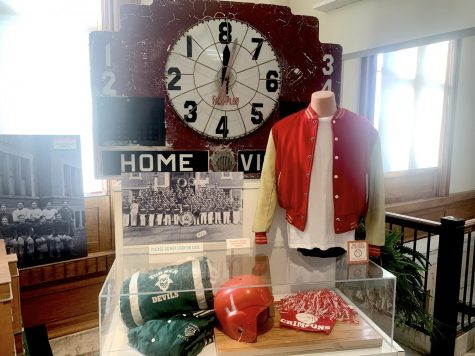How to shop sustainably
November 1, 2019
Previously, an article was written explaining the sustainability movement in fashion, how it became so widespread, what sustainably entails, and what goes against its principles. For many people, shopping sustainably seems like a large task to ask of someone and a difficult habit to begin. Many believe it is very expensive, and they do not have the luxury of having an exclusively environmentally-friendly closet with only high-quality pieces. However, this is not the case. Anyone can shop sustainability and there are many ways to reduce, reuse, and recycle clothing for the better of the world and one’s own personal closet.
First, the easiest and cheapest way to shop sustainably is to purchase clothing from thrift stores. Thrift stores are stores that sell donated or previously owned clothing, usually at very low prices. Large thrift store chains are Goodwill, Salvation Army, and Savers. Since vintage clothing is trending, these stores usually have a high variety of styles and sizes and it is easy to find fitting, satisfying pieces at thrift stores. When going thrift shopping, it is best to have an open mind and not only find pieces that are appealing at first sight but also ones that simply have potential. Because the clothing is so cheap, many thrifters make adjustments to clothing they buy at home, such as cropping T-shirts, cutting shoulder pads out of blazers, or adding embroidery details. Thrifting at Goodwills in particular also has a positive impact on local communities because the purchases made go towards giving people jobs and funding well-being programs organized by Goodwill.
Second, quality over quantity is a very important principle in sustainability. Instead of purchasing multiple low-quality jeans or tees from companies like H&M and Forever21 that fall apart quickly, purchase one good, high-quality piece of clothing that will last forever. This will in the long run save money and also allow one to wear better, more comfortable clothes. Doing this over time should allow one to have an extremely fulfilling closet in contrast to having dozens of pieces one purchased simply because they were affordable at the time.
An even cheaper way to buy high-quality clothing is by purchasing secondhand from reselling apps such as eBay, Poshmark, and Mercari. These sites have thousands of resellers that simply sell clothes they do not wear anymore. Because their items are pre-owned, they are sold for much cheaper than retail. Most websites have functions in which users can filter the condition to “good” or “almost new” to make sure they are still receiving items in good condition, similar to what the items would look or feel like in store. One can also sell their own clothes on these platforms to rid their closets of items they do not want anymore or that do not fit. This way, instead of being thrown away and adding to the textile waste in the environment, clothing can simply circulate from one happy owner to another.
Shopping sustainably is not as challenging as it seems; most sustainable-friendly shoppers are not just privileged, well-paid people who have enough money to have only environment-friendly clothes in their closets. Developing shopping habits such as thrifting, adjusting clothes, purchasing less from fast fashion brands, and buying from resellers, are what any average person can do to shop sustainably without emptying their wallets.






